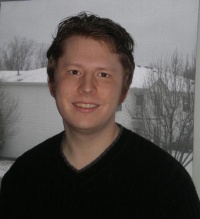
Dr Katy Chubb
I largely work on characterising the atmospheres of exoplanets, with a background in theoretical molecular spectroscopy. Prior to joining St Andrews I was a postdoc at SRON Netherlands Institute for Space Research, where I focused on retrievals of exoplanet atmospheres in preparation for JWST. I computed many opacities for a large variety of molecular species and re-analysed archive HST data to search for evidence of molecular signatures. I worked on moving towards a more 3D model of retrieving atmospheric properties from observations using radiative transfer. I am interested in expanding on this work, and investigating more methods to characterise atmospheres in detail, such as using polarimetry, combined with complex 3D cloud formation models and spectroscopy, to determine cloud and gas composition in gas giant exoplanets.
I received my PhD from University College London. There I computed a high-temperature linelist for acetylene (C2H2) for use in characterising exoplanet and stellar atmospheres, as part of the ExoMol group. I have worked on a number of initiatives and collaborations, including the Mayors fund for London Astronomy Club, and ORBYTS (Original Research for Young Twinkle Students), where I led projects to make theoretical line lists suitable for high resolution studies.
Dr Paul Rimmer

I work on exoplanet and brown dwarf atmospheres and try to answer some simple questions at the edge of the origin of life and chemical evolution. My main interests:
How do cosmic rays charge the atmosphere? What role do cosmic rays play in the climate?
Bridging equilibrium and non-equilibrium chemistry in the atmosphere: What does lightning do to chemistry, and what definite chemical tracers exist for lightning?
Answering these questions will involve cosmic ray transport calculations and chemical kinetics modeling that includes cosmic ray and X-ray ionization, FUV photochemistry and shock-driven chemistry.
I received my PhD at The Ohio State University (Advisers: Eric Herbst, Richard Freeman). There I explored the chemical impact of various physical conditions in the interstellar medium.
Currently, he is a postdoc at University of Cambridge
Cavendish Astrophysics and Laboratory of Molecular Biology
web-page
publications on ADS
Dr Irena Vorgul

I have a diverse research experience in electromagnetics and plasma physics including astrophysical applications. I am interested in electrification of brown dwarf atmospheres, lightning discharges there and radio emission from brown dwarfs in a contest of retrieving information on magnetic fields and processes in the atmospheres. I am working on modelling cyclotron radio emission from brown dwarfs in order to get an insight into global magnetic fields configuration and strength there as well as to look for signatures of discharges affecting it (propagation effects). I also do modelling of radiation from lightning discharge, including effects from ionized regions of atmosphere surrounding the discharge.
Dr Craig R. Stark

My research interests are broadly within the field of theoretical plasma physics, the modelling of plasma phenomena and its astrophysical application. I received my PhD at the University of Glasgow where I studied plasma processes in pulsar environments, including the growth of spheroidal dust grains via plasma deposition. At the LEAP project I was applying plasma processes and collective effects associated with gas discharges in planetary atmospheres populated with dust.
Currently he is a senior lecturer at Glasgow University, Scotland.
publications on ADS
